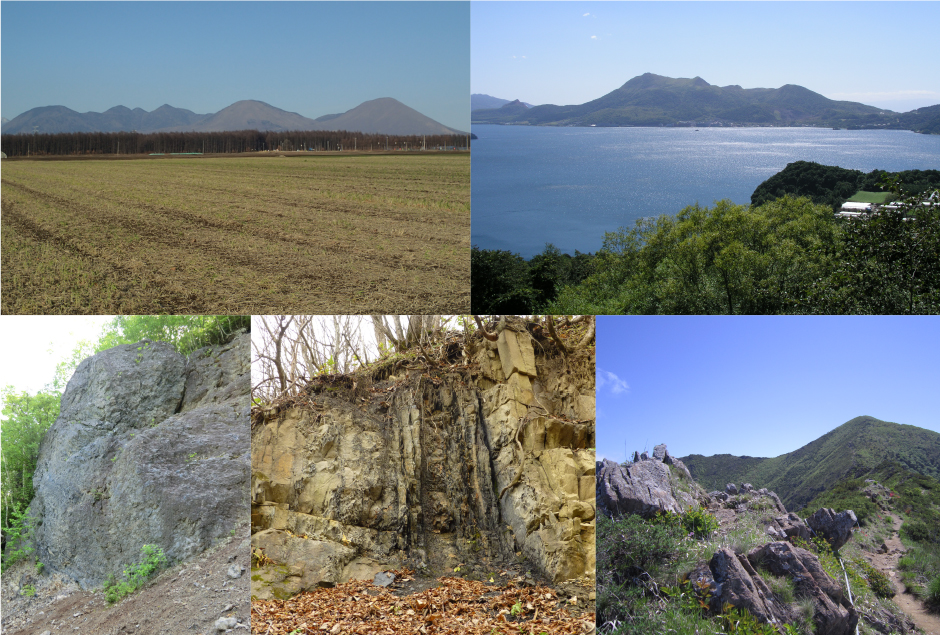Then the earth cooled off, and intense cold periods (ice ages) and somewhat warm periods (interglacial periods) began to alternate. The snow that fell in the mountains remained in place rather than melting, and some of it became glaciers that began carving out tall mountains such as the Hidaka Mountains.
The earth became warm beginning about 20,000 years ago, the snow and ice melted and the seas levels began to rise again. Hokkaido became an island like it is today.
The jostling of the plates continues today and it is for this reason that there are many active volcanoes on Hokkaido.
How Hokkaido came to be
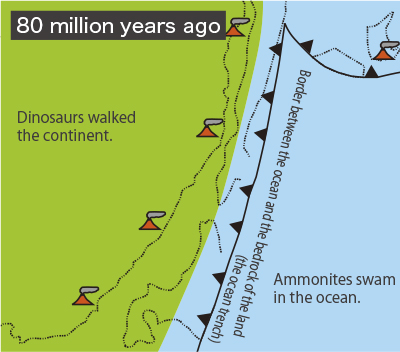 Hokkaido was still scattered over an area of thousands of kilometers, including part of the continent and islands offshore from it.
Hokkaido was still scattered over an area of thousands of kilometers, including part of the continent and islands offshore from it.
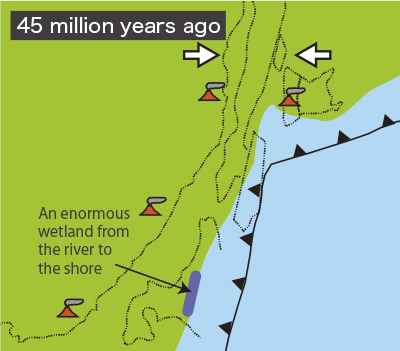 Hokkaido's lands gradually got closer to one another through the movement of the plates.
Hokkaido's lands gradually got closer to one another through the movement of the plates.
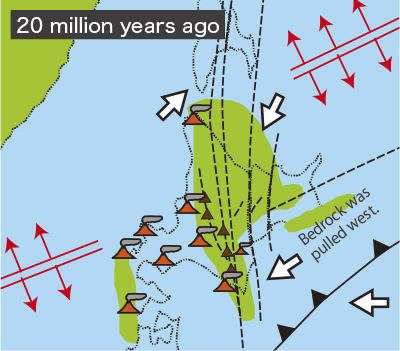 Hokkaido's land had for the most part reached its current location. At the border where lands bumped together, the high Hidaka Mountains began to bulge up.
Hokkaido's land had for the most part reached its current location. At the border where lands bumped together, the high Hidaka Mountains began to bulge up.
 Volcanoes were active throughout Hokkaido and obsidian was formed in Shirataki.
Volcanoes were active throughout Hokkaido and obsidian was formed in Shirataki.
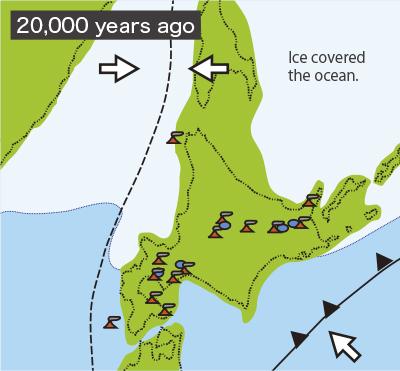 Because the level of the ocean fell, Hokkaido was connected by land to the continent.
Because the level of the ocean fell, Hokkaido was connected by land to the continent.
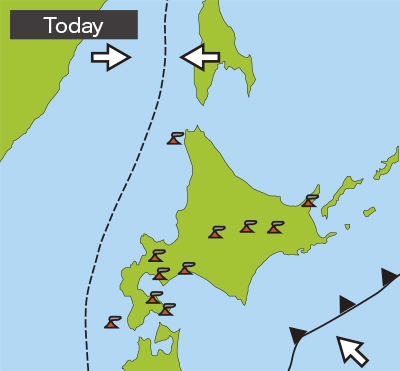 Hokkaido is an island once again and there are active volcanoes here and there.
Hokkaido is an island once again and there are active volcanoes here and there.



